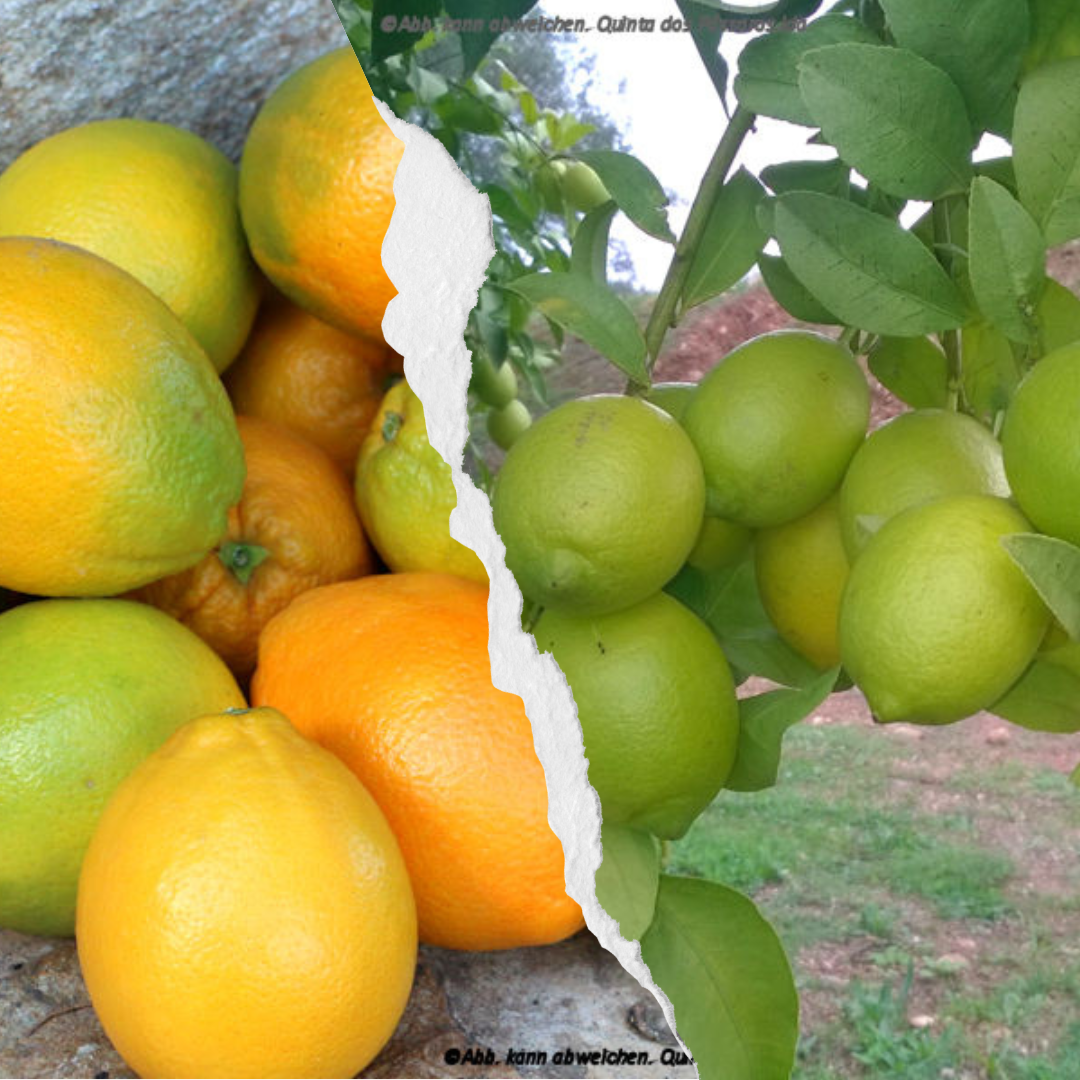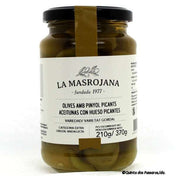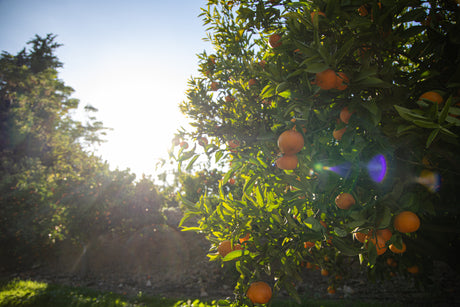Why can't you tell the ripeness of oranges or lemons by the color of their peel?
Citrus fruits are among the fruits that require a really long ripening process.
There are many different orange varieties: early, mid-season, and late-season. All orange trees bloom in April. The early varieties are ready in November, while the later and very late varieties continue into the next harvest year, i.e., into the new season. The next fruits for the following year are already hanging on the trees. Thus, in our cultivation, a ripening period of up to 18 months and a high degree of ripeness can occur.
However, this is not practiced in normal trade because the long ripening period means that many fruits fall to the ground and are therefore no longer usable.
So why can't the degree of ripeness be determined by the color of the peel?
Citrus fruits change color when temperatures differ greatly between day and night.
These conditions only exist in the cold season.
Due to the cool temperatures at night (approximately 8°C and below, with daytime temperatures still quite high at around 20°C), the fruit peels change color. Oranges acquire their typical orange color, while lemons turn yellow.
If temperatures are mild for a long time in late autumn, this process takes place quite late, but the fruits have already reached the appropriate level of ripeness.
Ripeness is measured by sugar content. For example, the first oranges in November still have a greenish skin, but physiologically they already have the required sugar content and have reached a nice degree of ripeness.

Image description: still little orange peel color
This can also be observed with lemons .
The first lemons in summer therefore remain green and only change color on cold nights.

And now it gets even more interesting:
Oranges that have been on the tree for the second summer, meaning they have a very long ripening period and have already acquired their orange color in the winter, turn green again under high light intensity. Chlorophyll (leaf green) is regenerated in the peel. The green pigments regenerate to protect the peel. The more intensely orange a fruit is, the easier it is for insects to find, which cause a lot of damage in the summer. Even though the fruit has been ripening on the tree for a year or more, customers are sometimes unsure whether it has reached ripeness.

Image description: Reversion of the orange peel color with more chlorophyll / leaf green.
And also important to know:
Fruits that have an extremely long ripening period and have been exposed to plenty of sunlight have many dark sunspots. How could it be otherwise?
Imagine that you, or rather your skin, are exposed to the sun every day for many months here in the south...
For understandable reasons, the fruit often no longer looks attractive. Especially the fruit that has ripened on the outside of the tree.
The taste, however, is so wonderfully sweet and juicy that many of our fruit fans are happy to order oranges even in the summer, as they are not used to this high degree of ripeness of oranges from regular stores.

Image description: After a long ripening period with many hours of sunshine and an extremely high degree of ripeness.



